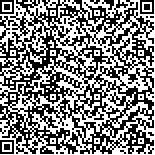| 引用本文: | 高迪,张艳涛,李剑斌,程方杰.爆燃驱动式射钉侵彻Q235靶板数值模拟[J].哈尔滨工业大学学报,2019,51(5):32.DOI:10.11918/j.issn.0367-6234.201807073 |
| GAO Di,ZHANG Yantao,LI Jianbin,CHENG Fangjie.Numerical simulation on penetration of Q235 steel target for deflagration-driving-type nail[J].Journal of Harbin Institute of Technology,2019,51(5):32.DOI:10.11918/j.issn.0367-6234.201807073 |
|
| |
|
|
| 本文已被:浏览 1764次 下载 1486次 |

码上扫一扫! |
|
|
| 爆燃驱动式射钉侵彻Q235靶板数值模拟 |
|
高迪1,张艳涛2,李剑斌3,程方杰1
|
|
(1.天津大学 材料科学与工程学院, 天津 300350;2.陆军炮兵防空兵学院, 合肥 230031;3.陆军工程大学 野战工程学院, 南京 210007)
|
|
| 摘要: |
| 为研究爆燃驱动式射钉侵彻靶板深度的影响因素及规律,对直径7 mm的射钉垂直侵彻20 mm厚Q235靶板进行数值模拟.基于LS-DYNA有限元软件,选择Johnson-Cook本构模型和Gruneison状态方程对射钉侵彻靶板过程进行仿真模拟,并通过侵彻试验验证模型的合理性.采用所建立的仿真模型,模拟分析射钉的头部锥角和材料强度、炸药驱动力、射钉与靶板初始间隙等因素对Q235靶板侵彻深度的影响规律.结果表明:随着射钉头部锥角增加,侵彻阻力不断增大,射钉最大速度逐渐减小,侵彻深度及有效侵彻深度不断减小;射钉材料的静屈服强度低于700 MPa时,由于钉体发生明显的墩粗变形,侵彻深度较浅,而高于700 MPa时,射钉材料的静屈服强度对侵彻深度影响较小;炸药爆燃产生的气体压强低于150 MPa时,侵彻深度随气体压强增大近似呈线性增加,而高于150 MPa时,靶板背面变形使应力得到释放,侵彻深度显著提高;随射钉与靶板初始间隙增加,射钉在接触靶板前可获得更高的速度,侵彻深度不断增大,但超过20 mm后,初始间隙对侵彻深度基本没有影响. |
| 关键词: 侵彻深度 爆燃 射钉 Q235钢 数值模拟 |
| DOI:10.11918/j.issn.0367-6234.201807073 |
| 分类号:O385 |
| 文献标识码:A |
| 基金项目: |
|
| Numerical simulation on penetration of Q235 steel target for deflagration-driving-type nail |
|
GAO Di1,ZHANG Yantao2,LI Jianbin3,CHENG Fangjie1
|
|
(1.College of Materials Science and Engineering, Tianjin University, Tianjin 300350, China; 2.PLA Army Academy of Artillery and Air Defense, Hefei 230031, China; 3.College of Field Engineering, Army Engineering University of PLA, Nanjing 210007, China)
|
| Abstract: |
| To study the factors and regularities affecting the penetration depth of steel target subjected to impact by deflagration-driving-type nail, the penetration process of 20 mm thickness Q235 steel target by 7 mm diameter nail was studied with numerical simulation. The Johnson-Cook constitutive model and the Gruneison state equation were used to simulate the penetration process of nails into steel target based on LS-DYNA finite element software, and the rationality of this model was verified through penetration test. Using the established simulation model, the influences of the cone angle of the nail’s nose, material strength of the nail, deflagration driving force, and the initial gap between the nail and the steel target on the penetration depth of Q235 steel target were analyzed. Results indicate that with the increase of the cone angle of the nail’s nose and the increase of penetration resistance, the maximum speed of the nail was decreased, so the penetration depth and the effective penetration depth were continuously reduced. When the static yield strength of the nail was less than 700 MPa, the penetration depth was relatively shallow due to the obvious mushrooming deformation of the nail, and when it was higher than 700 MPa, the static yield strength of the nail had little effect on the penetration depth. When the pressure produced by the deflagration was less than 150 MPa, the penetration depth increased approximately linearly with the increase of pressure, and when it was higher than 150 MPa, the stress was released due to the deformation of the back of the target plate, and the penetration depth was significantly improved. With the increase of the initial gap between the nail and the steel target, nail could achieve higher velocity before touching the target plate, and the penetration depth was increased, but when it was more than 20 mm, the initial gap no longer affected the penetration depth. |
| Key words: penetration depth deflagration nail Q235 steel numerical simulation |
|
|
|
|







